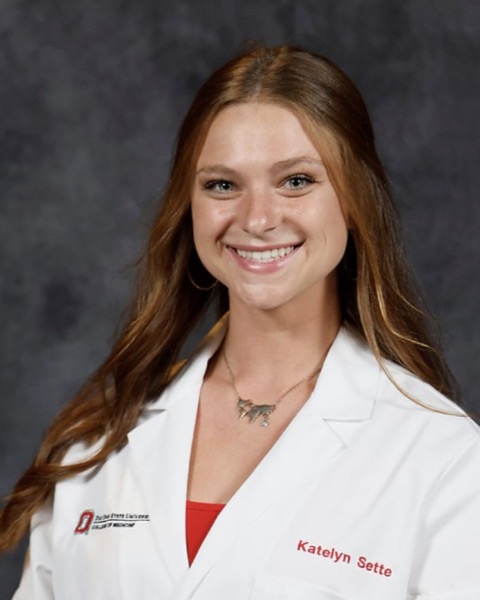
Katelyn Sette, BS
Medical Student
The Ohio State University College of Medicine
Katelyn Sette is currently an MD candidate at Ohio State University.
With her father being a veterinarian surgeon, she grew up in the hosptial setting and spent many hours assisting in the OR. She knew from a young age that she wanted to be a surgeon; although, unlike her father, she wanted to work within human medicine. While in high school, she began shadowing different specialties. She first became interested in neurosurgery when, during one of these shadowing experiences, a trauma case arrived and needed emergent spinal surgery. It was the complexity of the case and the beauty of the spinal cord that captured her attention during the surgery.
This experience led her to pursue neurological research while in undergraduate training at Mississippi State University. Within her first month, Katelyn began working in a neurotoxiology laboratory studying the effects of agricultural chemicals on brain function and behaviors of juvenile animal models. She worked on the project from start to finish over her four year training and really enjoyed all aspects, from writing the proposal to publishing her first manuscript. She presented her final work as her Honors Thesis in Biochemistry.
She knew, upon entering medical school, that she wanted to continue accomplishing research in the neurological field while pursuing a career in surgery. With the help of research scholarships, especially the William E. Hunt Scholarship, and her mentors at OSU, she has been able to work on many different spine research projects, several of which are being presented at Spine Summit this year. Her present project on how intervertebral disc features affect posterior column osteotomy outcomes are the beginning of her work to increase the ability of technological advances in spinal surgeries. Katelyn looks forward to continuing this work and incorporating it into AI systems, such as UNiD, to help surgeons better prepare surgical plans. Her ongoing commitment reflects a dedication to enhancing surgical planning and ultimately improving patient outcomes.
Poster(s):
-
Wednesday, February 21, 2024Wednesday, February 21, 2024
